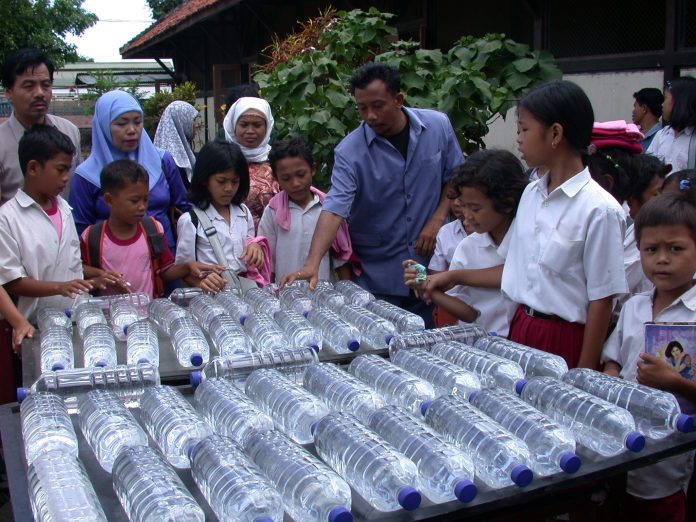Water can be disinfected if left for as little as six hours in intense sunlight, yet many living in the world’s poorest countries do not adopt solar disinfection despite their tropical climate.
One in 10 people lack access to safe water, and an estimated 3.4 million people die each year from waterborne diseases.
People living in the most effected parts of the world, such as sub-Saharan Africa, risk serious illness from microbiological pathogens extracted at sources many miles from their homes.
Ceramic filtration is an inexpensive method that costs a family in Nicaragua as little as 0.034 US cents to treat a litre of water at a rate of 20 litres per day, using a single filter for up to three years, according to the NGO Potters for Peace.
But according to Kevin McGuigan, associate professor at the Royal College of Surgeons Institute, solar disinfection (SODIS) is a lower-cost way to cleanse water for the most deprived communities that cannot afford even the cheapest high-tech solutions.
“Solar water disinfection [is] the most cost-effective method over the course of a year,” said McGuigan. “Per person, per year, the cost is around 63 cents. That is just the cost of getting the plastic bottle. Very often you can get the plastic bottle as refuse, rather than actually purchasing the contents. From a cost perspective, it is very attractive.”
Since 2011, Helvetas Swiss Intercooperation and the ETH-Water Research Institute Eawag have promoted the use of solar disinfection. Together, they argue that pathogenic microorganisms in water are vulnerable to two effects of sunlight, specifically UV waves and high water temperatures that kill harmful bacteria.
McGuigan said the challenge facing research institutions working to spread solar disinfection is on the ground in countries that have yet to adopt the practice as a common solution.
“When we first introduce it into an area, there’s a certain level of disbelief and maybe scepticism, because they’re thinking ‘Can that work?’ What we have to do is show them that there is a benefit. If they can’t afford other solutions, solar disinfection is a very viable option,” he said.
Other more labour intensive solutions include water flocculation, a method that adds a binding agent to dirty water to separate infected substances from drinkable liquid, which has been promoted by companies such as Proctor and Gamble (P&G).
The cost of using flocculation products however is around US$5 per person per year, almost eight times the cost of adopting solar methods. The average monthly wage for someone working in sub-Saharan Africa meanwhile is around US$50 to US$100.
Solar disinfection is recognised in countries that continue to benefit from cost-effective solutions to clean water access, however, McGuigan said more involvement at state level is required to raise public investment in rural areas where it can have the most impact.
“The World Health Organisation and UNICEF both promote solar disinfection as an appropriate intervention for post-disaster situations,” added McGuigan. “The greater task now is getting it recognised at a governmental level from the various countries in sub-Saharan Africa.”








